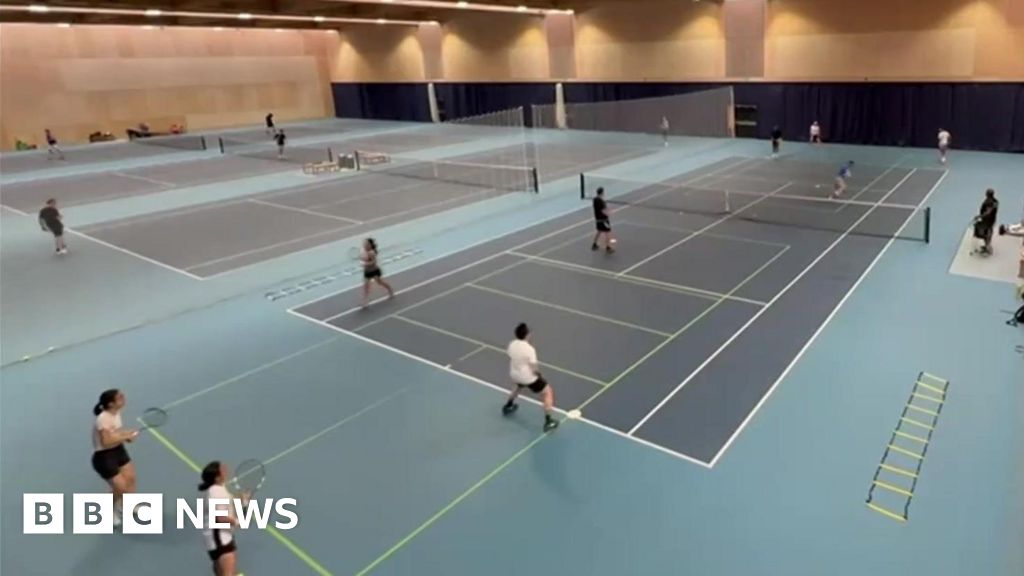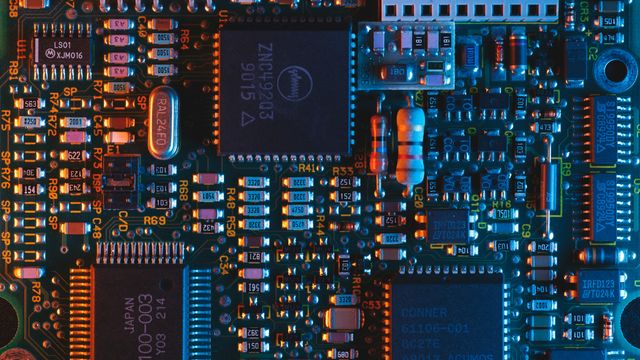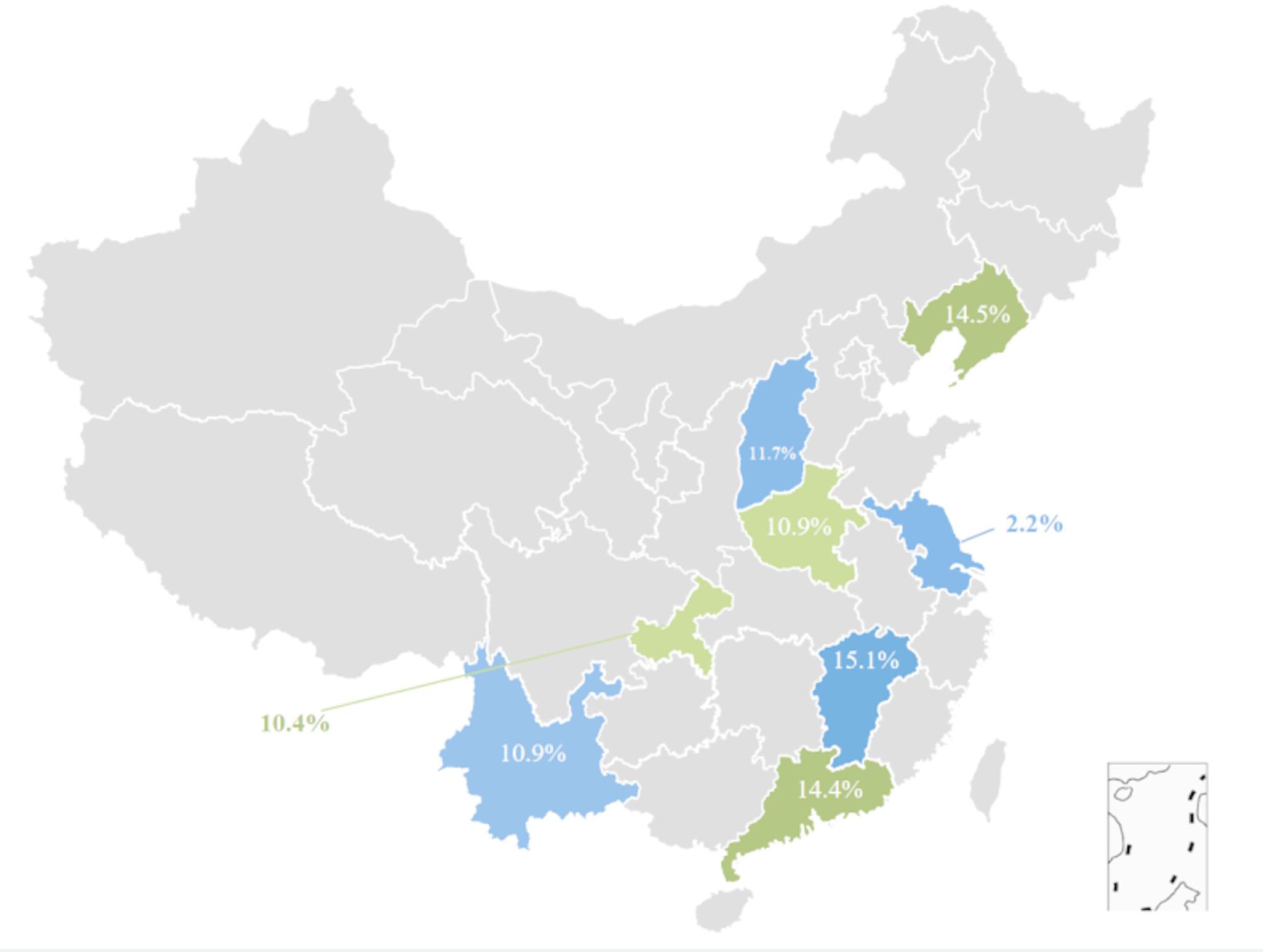Meherali S, Punjani N, Louie-Poon S, Abdul Rahim K, Das JK, Salam RA, et al. Mental health of children and adolescents amidst COVID-19 and past pandemics: A rapid systematic review. Int J Environ Res Public Health. 2021;18(7):3432.
PubMed
PubMed Central
Google Scholar
Seligman LD, Ollendick TH. Comorbidity of anxiety and depression in children and adolescents: an integrative review. Clin Child Fam Psychol Rev. 1998;1(2):125–44.
CAS
PubMed
Google Scholar
Cummings CM, Caporino NE, Kendall PC. Comorbidity of anxiety and depression in children and adolescents: 20 years after. Psychol Bull. 2014;140(3):816–45.
PubMed
Google Scholar
Konac D, Young KS, Lau J, Barker ED. Comorbidity between depression and anxiety in adolescents: Bridge symptoms and relevance of risk and protective factors. J Psychopathol Behav Assess. 2021;43(3):583–96.
PubMed
PubMed Central
Google Scholar
Choi KW, Kim YK, Jeon HJ. Comorbid anxiety and depression: clinical and conceptual consideration and transdiagnostic treatment. Adv Exp Med Biol. 2020;1191:219–35.
CAS
PubMed
Google Scholar
Cramer AO, Waldorp LJ, van der Maas HL, Borsboom D. Comorbidity: a network perspective. Behav Brain Sci. 2010;33(2–3):137–93.
PubMed
Google Scholar
Borsboom D, Cramer AO. Network analysis: an integrative approach to the structure of psychopathology. Annu Rev Clin Psychol. 2013;9:91–121.
PubMed
Google Scholar
He Y, Wu C, LeMoult J, Huang J, Zhao Y, Liang K, et al. Exploring symptom-level associations between anxiety and depression across developmental stages of adolescence: a network analysis approach. BMC Psychiatry. 2023;23(1):941.
PubMed
PubMed Central
Google Scholar
Cai H, Bai W, Liu H, Chen X, Qi H, Liu R, et al. Network analysis of depressive and anxiety symptoms in adolescents during the later stage of the COVID-19 pandemic. Transl Psychiatry. 2022;12(1):98.
CAS
PubMed
PubMed Central
Google Scholar
Liu R, Chen X, Qi H, Feng Y, Su Z, Cheung T, et al. Network analysis of depressive and anxiety symptoms in adolescents during and after the COVID-19 outbreak peak. J Affect Disord. 2022;301:463–71.
CAS
PubMed
PubMed Central
Google Scholar
Liu D, Yu M, Zhang X, Cui J, Yang H. Adolescent anxiety and depression: perspectives of network analysis and longitudinal network analysis. BMC Psychiatry. 2024;24(1):619.
PubMed
PubMed Central
Google Scholar
Wang Y, Li Z, Cao X. Investigating the network structure and causal relationships among Bridge symptoms of comorbid depression and anxiety: A bayesian network analysis. J Clin Psychol. 2024;80(6):1271–85.
PubMed
Google Scholar
Zou H, Gao J, Wu W, Huo L, Zhang W. Which comes first? Comorbidity of depression and anxiety symptoms: A cross-lagged network analysis. Soc Sci Med. 2024;360:117339.
PubMed
Google Scholar
Xue S, Lu A, Chen W, Li J, Ke X, An Y. A latent profile analysis and network analysis of anxiety and depression symptoms in Chinese widowed elderly. J Affect Disord. 2024;366:172–80.
PubMed
Google Scholar
Zhang P, Wang L, Zhou Q, Dong X, Guo Y, Wang P, et al. A network analysis of anxiety and depression symptoms in Chinese disabled elderly. J Affect Disord. 2023;333:535–42.
PubMed
Google Scholar
Yohannes AM, Murri MB, Hanania NA, Regan EA, Iyer A, Bhatt SP, et al. COPDGene investigators. Depressive and anxiety symptoms in patients with COPD: A network analysis. Respir Med. 2022;198:106865.
PubMed
PubMed Central
Google Scholar
Tang Q, Wang R, Niu H, Li Y, Li Y, Hu Z, et al. Mapping network connection and direction among symptoms of depression and anxiety in patients with chronic gastritis. Psych J. 2024;13(5):824–34.
PubMed
PubMed Central
Google Scholar
Ren L, Wang Y, Wu L, Wei Z, Cui LB, Wei X, et al. Network structure of depression and anxiety symptoms in Chinese female nursing students. BMC Psychiatry. 2021;21(1):279.
PubMed
PubMed Central
Google Scholar
Sun HL, Zhao YJ, Sha S, Li XH, Si TL, Liu YF, et al. Depression and anxiety among caregivers of psychiatric patients during the late stage of the COVID-19 pandemic: A perspective from network analysis. J Affect Disord. 2024;344:33–40.
PubMed
Google Scholar
van Borkulo C, Boschloo L, Borsboom D, Penninx BW, Waldorp LJ, Schoevers RA. Association of symptom network structure with the course of depression. JAMA Psychiatry. 2015;72(12):1219–26.
PubMed
Google Scholar
Wang S, Hou W, Tao Y, Ma Z, Li K, Wang Y, et al. Mapping network connection among symptoms of anxiety, depression, and sleep disturbance in Chinese high school students. Front Public Health. 2022;10:1015166.
PubMed
PubMed Central
Google Scholar
Wang Z, Yang H, Elhai JD. Are there gender differences in comorbidity symptoms networks of problematic social media use, anxiety and depression symptoms? Evidence from network analysis. Pers Indiv Differ. 2022;195:111705.
Google Scholar
Li K, Ren L, Zhang L, Liu C, Zhao M, Zhan X, et al. Social anxiety and depression symptoms in Chinese left-behind children after the lifting of COVID-19 lockdown: A network analysis. Int J Soc Psychiatry. 2023;69(4):916–27.
PubMed
Google Scholar
Altemus M, Sarvaiya N, Neill Epperson C. Sex differences in anxiety and depression clinical perspectives. Front Neuroendocrinol. 2014;35(3):320–30.
PubMed
PubMed Central
Google Scholar
Bangasser DA, Cuarenta A. Sex differences in anxiety and depression: circuits and mechanisms. Nat Rev Neurosci. 2021;22(11):674–84.
CAS
PubMed
Google Scholar
Epskamp S, Borsboom D, Fried EI. Estimating psychological networks and their accuracy: A tutorial paper. Behav Res Methods. 2018;50(1):195–212.
PubMed
Google Scholar
Shang B, Wang Y, Luo C, Lv F, Wu J, Shao X. Core and Bridge symptoms in self-perceived aging, depression, and anxiety among the elderly with multiple chronic conditions in Chinese communities: a network analysis perspective. BMC Public Health. 2025;25(1):859.
PubMed
PubMed Central
Google Scholar
Kroenke K, Spitzer RL, Williams JB. The PHQ-9: validity of a brief depression severity measure. J Gen Intern Med. 2001;16(9):606–13.
CAS
PubMed
PubMed Central
Google Scholar
Spitzer RL, Kroenke K, Williams JB, Löwe B. A brief measure for assessing generalized anxiety disorder: the GAD-7. Arch Intern Med. 2006;166(10):1092–7.
PubMed
Google Scholar
Borsboom D. A network theory of mental disorders. World Psychiatry. 2017;16(1):5–13.
PubMed
PubMed Central
Google Scholar
Epskamp S, Cramer AO, Waldorp LJ, Schmittmann VD, Borsboom D. Qgraph: network visualizations of relationships in psychometric data. J Stat Softw. 2012;48(4):1–18.
Google Scholar
Bassi G, Mancinelli E, Salcuni S, Gori A, Musetti A. Failure in reflective functioning as a key factor in the association between problematic social networking sites use, attachment and childhood maltreatment: A network analysis approach on gender differences. Dev Psychopathol. 2023;1–9.
Jones PJ, Ma R, McNally RJ. Bridge centrality: A network approach to Understanding comorbidity. Multivar Behav Res. 2021;56(2):353–67.
Google Scholar
Jones PJ, Mair P, McNally RJ. Visualizing psychological networks: A tutorial in R. Front Psychol. 2018;9:1742.
PubMed
PubMed Central
Google Scholar
Lo Buglio G, Pontillo M, Cerasti E, Polari A, Schiano Lomoriello A, Vicari S, et al. A network analysis of anxiety, depressive, and psychotic symptoms and functioning in children and adolescents at clinical high risk for psychosis. Front Psychiatry. 2022;13:1016154.
PubMed
PubMed Central
Google Scholar
van Borkulo CD, van Bork R, Boschloo L, Kossakowski JJ, Tio P, Schoevers RA, et al. Comparing network structures on three aspects: A permutation test. Psychol Methods. 2023;28(6):1273–85.
PubMed
Google Scholar
Liu CH, Stevens C, Wong SHM, Yasui M, Chen JA. The prevalence and predictors of mental health diagnoses and suicide among U.S. College students: implications for addressing disparities in service use. Depress Anxiety. 2019;36(1):8–17.
PubMed
Google Scholar
Wang RQ, Wei RF, Zhang LT, Huang N, Wei QZ, Peng YY. Study on the comorbidity state of anxiety and depression among medical undergraduates and postgraduates. China Continuing Med Educ. 2019;11(18):57–9.
Google Scholar
Cénat JM, Dromer E, Mistry S, Villarreal DG, Moshirian Farahi SMM, Dalexis RD, et al. Prevalence and determinants of anxiety, depression and comorbid anxiety-depression symptoms among adolescents in Ebola-affected zones. BJPsych Open. 2023;9(6):e196.
PubMed
PubMed Central
Google Scholar
Cavanagh D, Hart LM, Basden S, Lu S, Reavley N. Prevalence estimates of depression and anxiety symptoms among adolescents in bermuda, according to age, gender and race. Soc Psychiatry Psychiatr Epidemiol. 2025. https://doi.org/10.1007/s00127-025-02829-z
Article
PubMed
Google Scholar
Catling JC, Bayley A, Begum Z, Wardzinski C, Wood A. Effects of the COVID-19 lockdown on mental health in a UK student sample. BMC Psychol. 2022;10(1):118.
CAS
PubMed
PubMed Central
Google Scholar
Beard C, Millner AJ, Forgeard MJ, Fried EI, Hsu KJ, Treadway MT, et al. Network analysis of depression and anxiety symptom relationships in a psychiatric sample. Psychol Med. 2016;46(16):3359–69.
CAS
PubMed
PubMed Central
Google Scholar
American Psychiatric Association. Diagnostic and statistical manual of mental disorders (DSM-5). Washington, DC: American Psychiatric Pub; 2013.
Google Scholar
Andreescu C, Lenze EJ, Dew MA, Begley AE, Mulsant BH, Dombrovski AY, et al. Effect of comorbid anxiety on treatment response and relapse risk in late-life depression: controlled study. Br J Psychiatry. 2007;190:344–9.
PubMed
Google Scholar
Wei Z, Ren L, Wang X, Liu C, Cao M, Hu M, et al. Network of depression and anxiety symptoms in patients with epilepsy. Epilepsy Res. 2021;175:106696.
PubMed
Google Scholar
Bai W, Xi HT, Zhu Q, Ji M, Zhang H, Yang BX, et al. Network analysis of anxiety and depressive symptoms among nursing students during the COVID-19 pandemic. J Affect Disord. 2021;294:753–60.
CAS
PubMed
PubMed Central
Google Scholar
McElroy E, Fearon P, Belsky J, Fonagy P, Patalay P. Networks of depression and anxiety symptoms across development. J Am Acad Child Adolesc Psychiatry. 2018;57(12):964–73.
PubMed
PubMed Central
Google Scholar
Lu G, Zhu L, Huang R, Lai P, Wang C. The association between adaptability and the symptoms of depression and anxiety in early adolescents: a network analysis in a longitudinal design. BMC Psychiatry. 2025;25(1):117.
PubMed
PubMed Central
Google Scholar
Winarsunu T, Iswari Azizaha BS, Fasikha SS, Anwar Z. Life skills training: can it increases self esteem and reduces student anxiety? Heliyon. 2023;9(4):e15232.
PubMed
PubMed Central
Google Scholar
Werner AM, Tibubos AN, Rohrmann S, Reiss N. The clinical trait self-criticism and its relation to psychopathology: A systematic review – Update. J Affect Disord. 2019;246:530–47.
PubMed
Google Scholar
Zhang Z, Qiu A, Zhang X, Zhao Y, Yuan L, Yi J, et al. Gender differences in the mental symptom network of high school students in shanghai, china: a network analysis. BMC Public Health. 2024;24(1):2719.
PubMed
PubMed Central
Google Scholar
Liu S, Ren H, Li Y, Liu Y, Fu S, Han ZR. Gender difference in the onset of adolescent depressive symptoms: A Cross-Lagged panel network analysis. Res Child Adolesc Psychopathol. 2025;53(1):113–23.
CAS
PubMed
Google Scholar
Kim HJ, Lee SH, Pae C. Gender differences in anxiety and depressive symptomatology determined by network analysis in panic disorder. J Affect Disord. 2023;337:94–103.
PubMed
Google Scholar
Su Z, Yang X, Hou J, Liu S, Wang Y, Chen Z. Gender differences in the co-occurrence of anxiety and depressive symptoms among early adolescents: A network approach. J Psychiatr Res. 2024;179:300–5.
PubMed
Google Scholar
Wang W, Wang J, Zhang X, Pei Y, Tang J, Zhu Y, et al. Network connectivity between anxiety, depressive symptoms and psychological capital in Chinese university students during the COVID-19 campus closure. J Affect Disord. 2023;329:11–8.
PubMed
PubMed Central
Google Scholar
Li W, Zhao N, Yan X, Xu X, Zou S, Wang H, et al. Network analysis of depression, anxiety, posttraumatic stress symptoms, insomnia, pain, and fatigue in clinically stable older patients with psychiatric disorders during the COVID-19 outbreak. J Geriatr Psychiatry Neurol. 2022;35(2):196–205.
PubMed
Google Scholar
Isvoranu AM, Epskamp S, Cheung MW. Network models of posttraumatic stress disorder: A meta-analysis. J Abnorm Psychol. 2021;130(8):841–61.
PubMed
Google Scholar


















